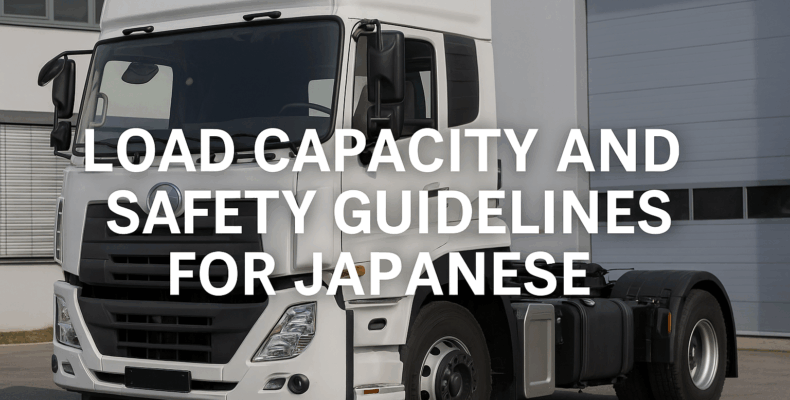Whether you’re delivering goods through rural roads or hauling equipment across the city, understanding your truck’s load capacity is vital. Overloading not only shortens the lifespan of your vehicle but also creates serious safety risks.
Thankfully, Japanese used trucks like the Isuzu Elf, Hino Dutro, and Mitsubishi Fuso Canter are built with efficiency and safety in mind. However, even the strongest trucks must follow proper loading guidelines to perform their best.
In this guide, we’ll walk you through everything you need to know about load limits, safety practices, and how to protect your cargo—and yourself—on every trip.
🛻 What Is Load Capacity and Why It Matters
Load capacity refers to the maximum weight your truck can safely carry. This includes the cargo, passengers, and any added equipment. Exceeding this limit can:
-
Damage the suspension and braking systems
-
Increase tire wear or cause blowouts
-
Reduce steering and braking performance
-
Lead to road accidents or vehicle rollover
Most importantly, overloading is illegal in many countries and may result in heavy fines, insurance rejection, or failed inspections.
🔎 How to Find Your Truck’s Load Rating
Japanese trucks usually display their Gross Vehicle Weight Rating (GVWR) and payload capacity on a label inside the cabin or near the driver’s seat.
-
GVWR = Truck weight + maximum load
-
Curb Weight = Truck alone, without load
-
Payload = GVWR − Curb Weight
For example, if your Isuzu Elf has a GVWR of 5,000 kg and a curb weight of 3,200 kg, your max payload is 1,800 kg.
Always check the manual or manufacturer label for exact figures.
✅ Load Safety Best Practices
1. Distribute Weight Evenly
-
Place heavy items in the center and low to the floor
-
Balance cargo from left to right and front to back
-
Uneven loads can cause the truck to tilt or sway
2. Use Tie-Downs and Barriers
-
Secure items using ropes, straps, or nets
-
Prevent items from shifting during braking or turning
-
Use barriers or racks for added safety
3. Avoid Overhanging Loads
-
Don’t let cargo extend beyond the truck bed without proper marking
-
In many countries, overhanging items must be flagged with reflective materials
-
Always check local regulations
4. Inspect Your Load Mid-Trip
-
Stop after the first few kilometers to check tie-downs
-
Re-tighten straps and fix shifting items
-
This habit prevents unexpected accidents later
⚠️ Signs of Overloading to Watch For
Even if you don’t have a scale, your truck may give warning signs:
-
Sagging rear suspension
-
Sluggish acceleration
-
Longer braking distance
-
Increased engine temperature
-
Unusual tire noise or wobbling
If you notice any of these, reduce your load immediately and inspect the vehicle.
🌍 International Considerations for Load Regulations
Different countries have different rules for axle weights, maximum gross limits, and load types. For example:
-
Kenya: Maximum 16-ton axle load, strict enforcement at weighbridges
-
New Zealand: Requires logbooks for loads over a certain weight
-
UAE: Enforces dynamic roadside weighing and radar systems
-
Philippines: Limits vary by road classification and must be declared at port
Make sure you understand the rules of your destination country before transporting goods.
🧾 Start with a Truck You Can Trust
Of course, none of these safety tips will help if your truck is already worn out or structurally compromised. That’s why it’s important to choose a reliable Japanese exporter who offers full inspection records and honest load specs.
👉 Here’s a great starting point:
Top 5 Trusted Japanese Used Truck Exporters for Global Buyers
These exporters supply trucks with proven durability and clear weight labels, making it easier to follow safety rules from day one.
✅ Final Thoughts
Respecting your truck’s load capacity is about more than compliance—it’s about protecting people, cargo, and your investment. By following proper loading practices, checking your vehicle often, and choosing trucks built to perform, you’ll stay safe and efficient in every job.
So before your next drive, weigh smart, secure well, and drive responsibly.
